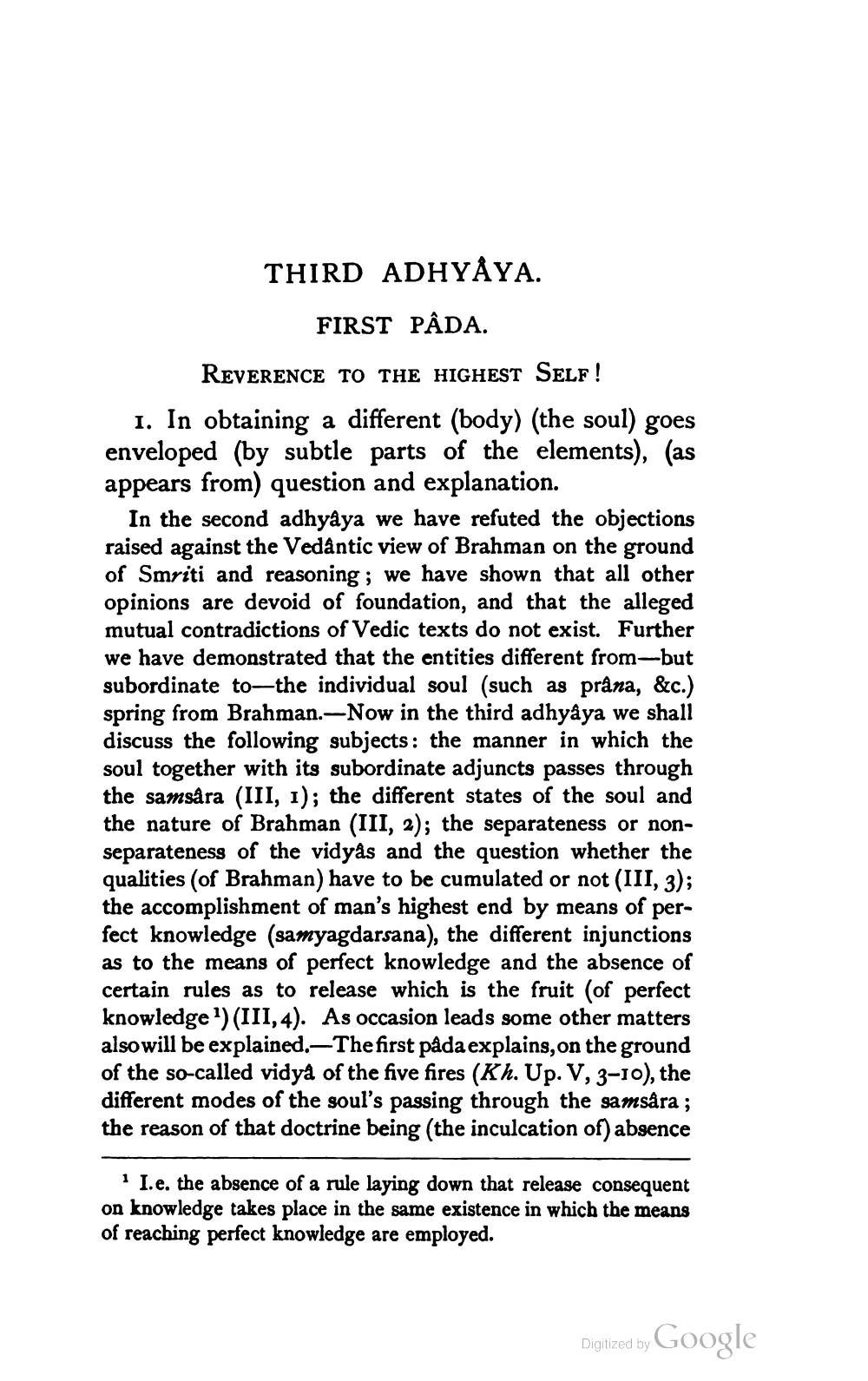________________
THIRD ADHYÅYA.
FIRST PÂDA. REVERENCE TO THE HIGHEST SELF! 1. In obtaining a different (body) (the soul) goes enveloped (by subtle parts of the elements), (as appears from) question and explanation.
In the second adhyâya we have refuted the objections raised against the Vedantic view of Brahman on the ground of Smriti and reasoning; we have shown that all other opinions are devoid of foundation, and that the alleged mutual contradictions of Vedic texts do not exist. Further we have demonstrated that the entities different from-but subordinate to the individual soul (such as prana, &c.) spring from Brahman.-Now in the third adhyâya we shall discuss the following subjects: the manner in which the soul together with its subordinate adjuncts passes through the samsåra (III, 1); the different states of the soul and the nature of Brahman (III, 2); the separateness or nonseparateness of the vidyas and the question whether the qualities (of Brahman) have to be cumulated or not (III, 3); the accomplishment of man's highest end by means of perfect knowledge (samyagdarsana), the different injunctions as to the means of perfect knowledge and the absence of certain rules as to release which is the fruit (of perfect knowledge ')(II1,4). As occasion leads some other matters also will be explained. The first pada explains, on the ground of the so-called vidya of the five fires (Kh. Up. V, 3-10), the different modes of the soul's passing through the samsåra ; the reason of that doctrine being (the inculcation of) absence
* I.e. the absence of a rule laying down that release consequent on knowledge takes place in the same existence in which the means of reaching perfect knowledge are employed.
Digitized by
Digilzed by Google




